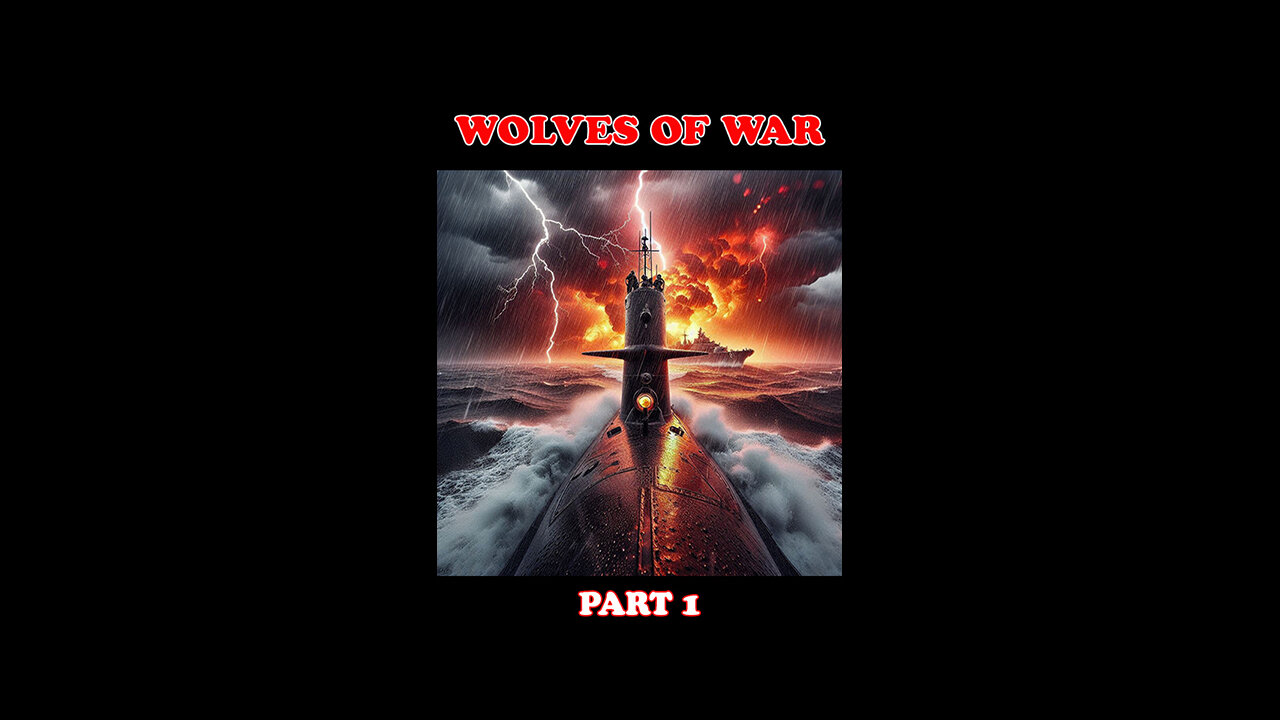Premium Only Content

Are U-Boat Battles the Chess of War? (Part 1)
Dive into the thrilling battles between WWII U-boats and their relentless hunters, namely warships, aircraft, and cutting-edge technology. Also find out more about the secrets, strategies, and drama beneath the waves.
Grab a FREE Sahara Desert ebook HERE: https://bit.ly/3PePvYU
If you enjoy it, a sub would be awesome!
VISIT US AT: https://panther-ebooks.com/ for superb ebook stories from world renowned authors and other upcoming authors.
SECRETS OF THE U-BOAT HUNTS - THE DEADLY CHESS GAME BENEATH THE WAVES
The Battle of the Atlantic during World War II was not just a fight for dominance at sea, it was a ruthless chess match of strategy, technology, and survival. German U-boats, prowling the ocean depths, became the scourge of Allied shipping lanes, but their predators, katalinas aircraft, destroyer escorts, coast guard cutters, and even battleships were no less formidable. Behind the drama of these hunts lie astonishing secrets, both chilling and awe-inspiring.
U-boat crews lived in claustrophobic conditions, their submarines doubling as weapons of war and steel coffins. These “wolves of the Atlantic” relied on stealth, stalking convoys under cover of darkness and launching torpedoes with surgical precision. Yet, their success often came with brutal consequences. A shocking fact is that nearly 75% of German U-boat crews never returned home, making it one of the most dangerous assignments in the war.
The Allied warships hunting them were equipped with groundbreaking technology, much of which was shrouded in secrecy. The advent of sonar, known as ASDIC at the time, was a game-changer. This early sonar technology allowed surface ships to detect submerged U-boats by bouncing sound waves off their hulls. Although rudimentary compared to modern systems, it transformed the hunt into a high-tech pursuit. In response, U-boats developed cunning countermeasures, such as “silent running,” where they would shut down all non-essential machinery to avoid detection.
Perhaps the most fascinating secret was the Allies’ breaking of the Enigma code. The Germans used this encryption machine to send secure orders to their U-boat fleets, believing it to be unbreakable. But British cryptographers at Bletchley Park, led by the brilliant Alan Turing, cracked the code in a top-secret operation. Armed with this intelligence, the Allies could redirect convoys away from U-boat wolfpacks, laying deadly ambushes instead. Despite their successes, the codebreaking operation was so secret that its impact wasn’t fully revealed until decades later.
The battles themselves were often as dramatic as the oceanic settings. Allied warships would drop depth charges, explosives designed to detonate at specific depths, to flush U-boats from the depths. The terrifying “ping” of sonar was a death knell for many submariners. However, U-boat captains, like the legendary Otto Kretschmer, employed ingenious tactics to evade capture. Kretschmer earned the nickname “Silent Otto” for his ability to attack convoys without being detected.
The Atlantic’s vastness also held mysteries and accidents. There are tales of destroyers chasing phantom submarines for hours, mistaking schools of fish for enemies. Additionally, U-boat captains sometimes surfaced near lifeboats of sunken ships to offer survivors food, water, or even directions, a fleeting moment of humanity in a brutal war.
By 1943, the tide turned against the U-boats, thanks to Allied advancements like long-range aircraft and “hunter-killer” groups combining ships and planes. But the legacy of these underwater hunters and their relentless pursuers endures. Their battles beneath the waves remain one of history’s most intense and technologically innovative theaters of war, a testament to human ingenuity, bravery, and the harrowing costs of global conflict.
-
 1:06:30
1:06:30
TheSaltyCracker
2 hours agoSaltcast Stream 03-24-25
30K57 -

The Officer Tatum
2 hours agoLIVE: TRUTH About Mahmoud Khalil, Leftists LOSE IT OVER Maga Hat, Bill Maher to MEET Trump | EP 84
12.6K10 -

Revenge of the Cis
3 hours agoEpisode 1463: Judge Moloch
16.5K5 -
 28:53
28:53
Kimberly Guilfoyle
4 hours agoInside the JFK Files with Roger Stone | Ep. 207
27.4K9 -
 1:21:07
1:21:07
vivafrei
6 hours agoRFK Jr. to Ban Pharma Ads? Pierre Poilievre Rally CRUSHING IT? The Boasberg Battle & MORE!
133K82 -
 1:04:24
1:04:24
In The Litter Box w/ Jewels & Catturd
1 day agoCONFLICT OF INTEREST | In the Litter Box w/ Jewels & Catturd – Ep. 767 – 3/24/2025
50.3K30 -
 2:14:54
2:14:54
The Quartering
6 hours agoAbsurd Epstein File Update, Trump Vs Supreme Court, Our Massive Giveaway, SodaGate & More!
267K389 -
 1:14:03
1:14:03
The HotSeat
2 hours agoOperation LET THEM SPEAK + Your Calls!
22.4K4 -
 34:44
34:44
LFA TV
3 hours agoMIRACLES DO HAPPEN!
14.5K -
 14:39
14:39
Talk Nerdy Sports - The Ultimate Sports Betting Podcast
2 hours ago3/24/25 - 8 Bets to Slap the Books – March 24th Madness with Vas & Riste
13.8K1